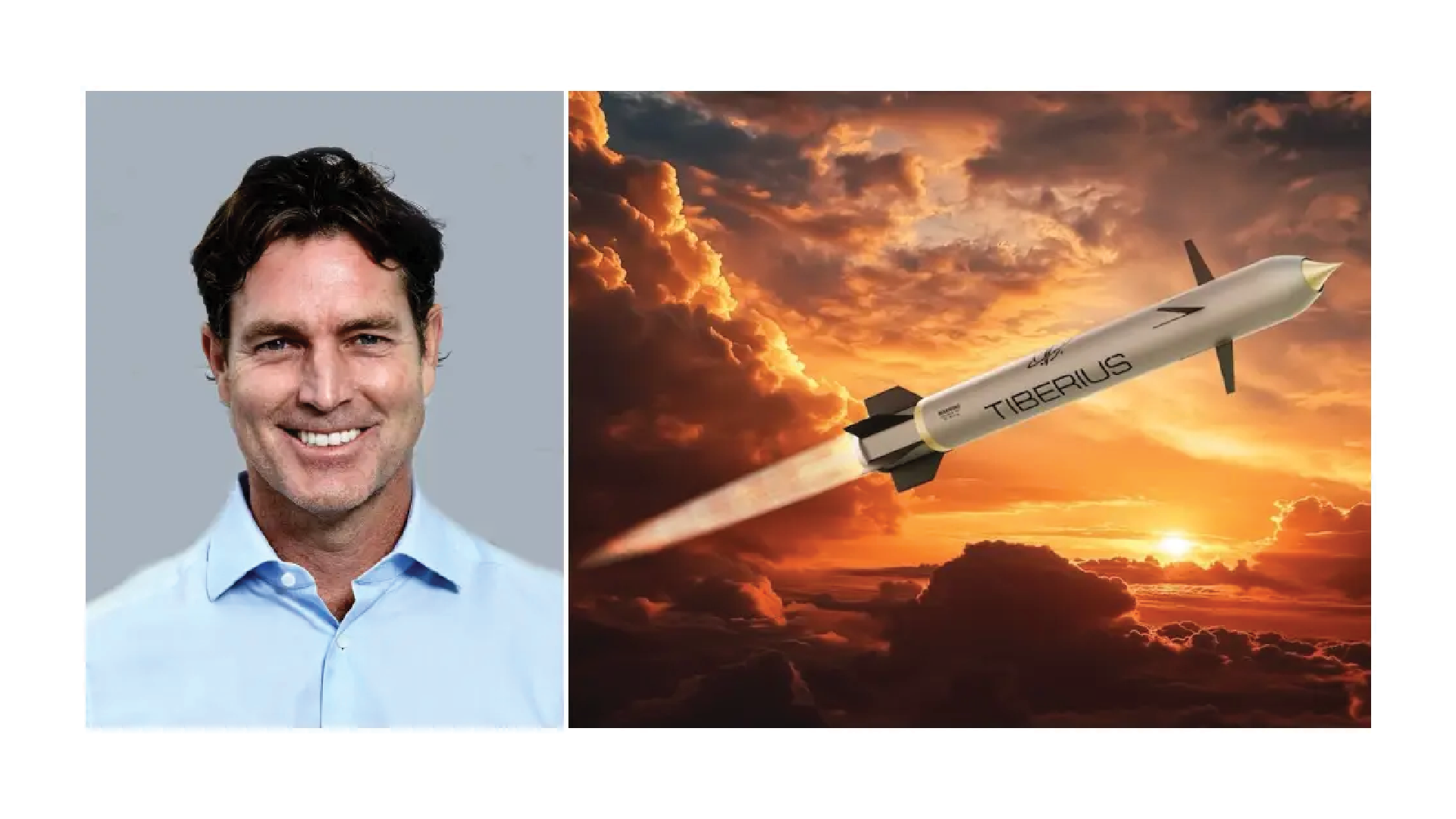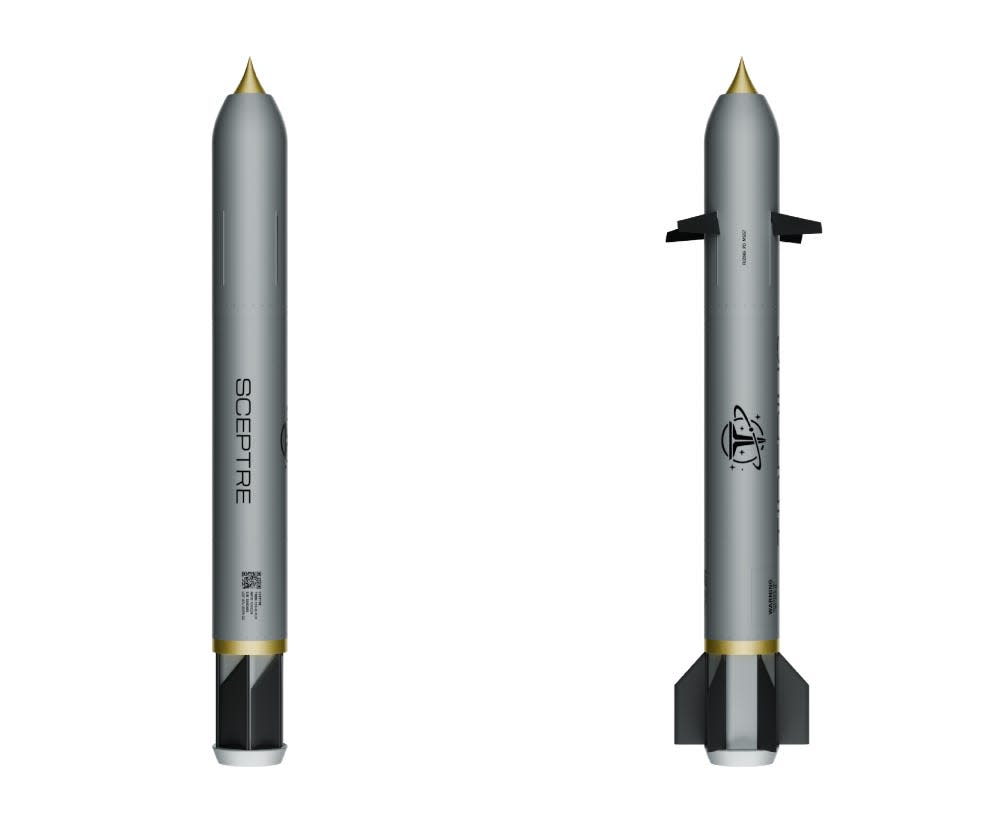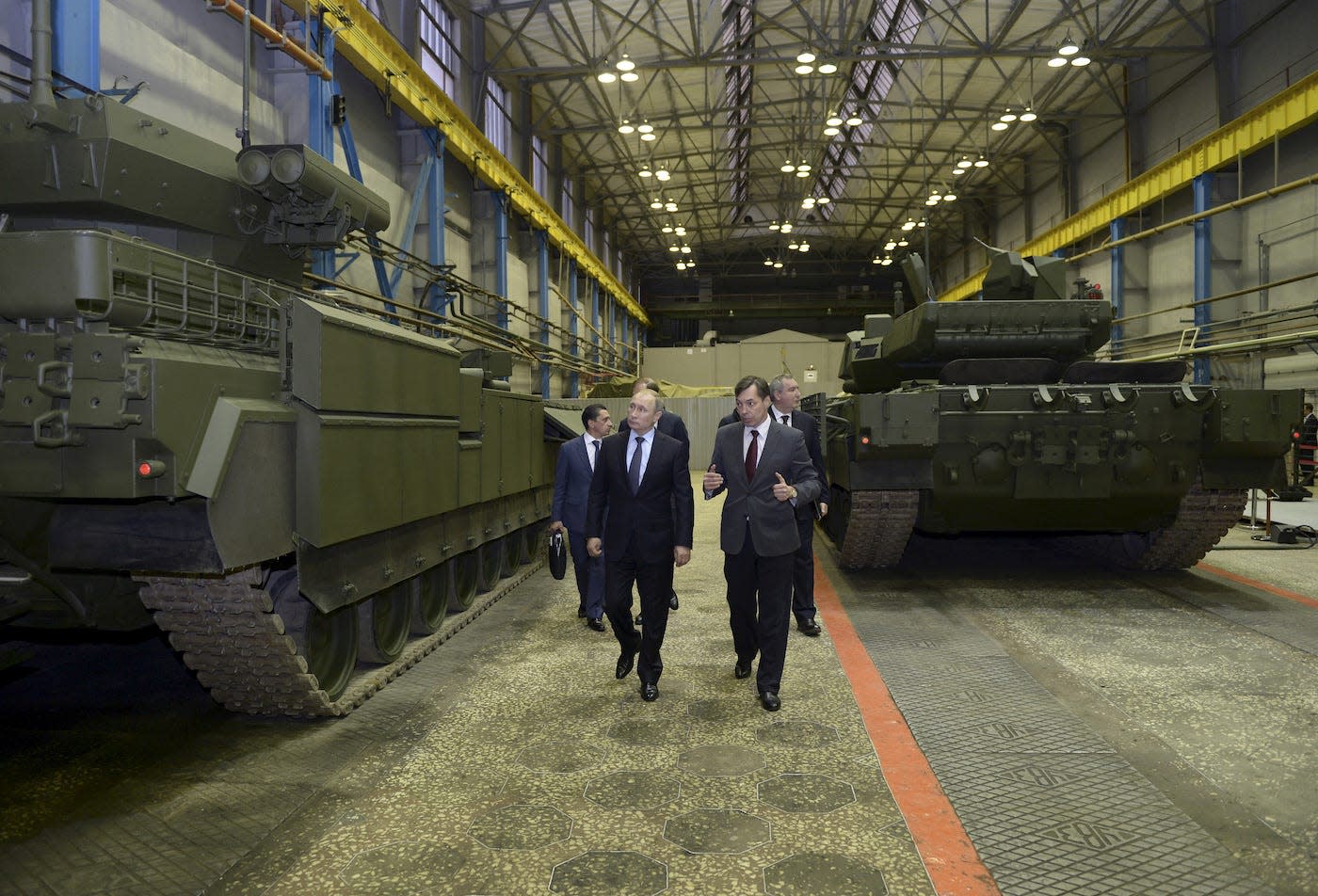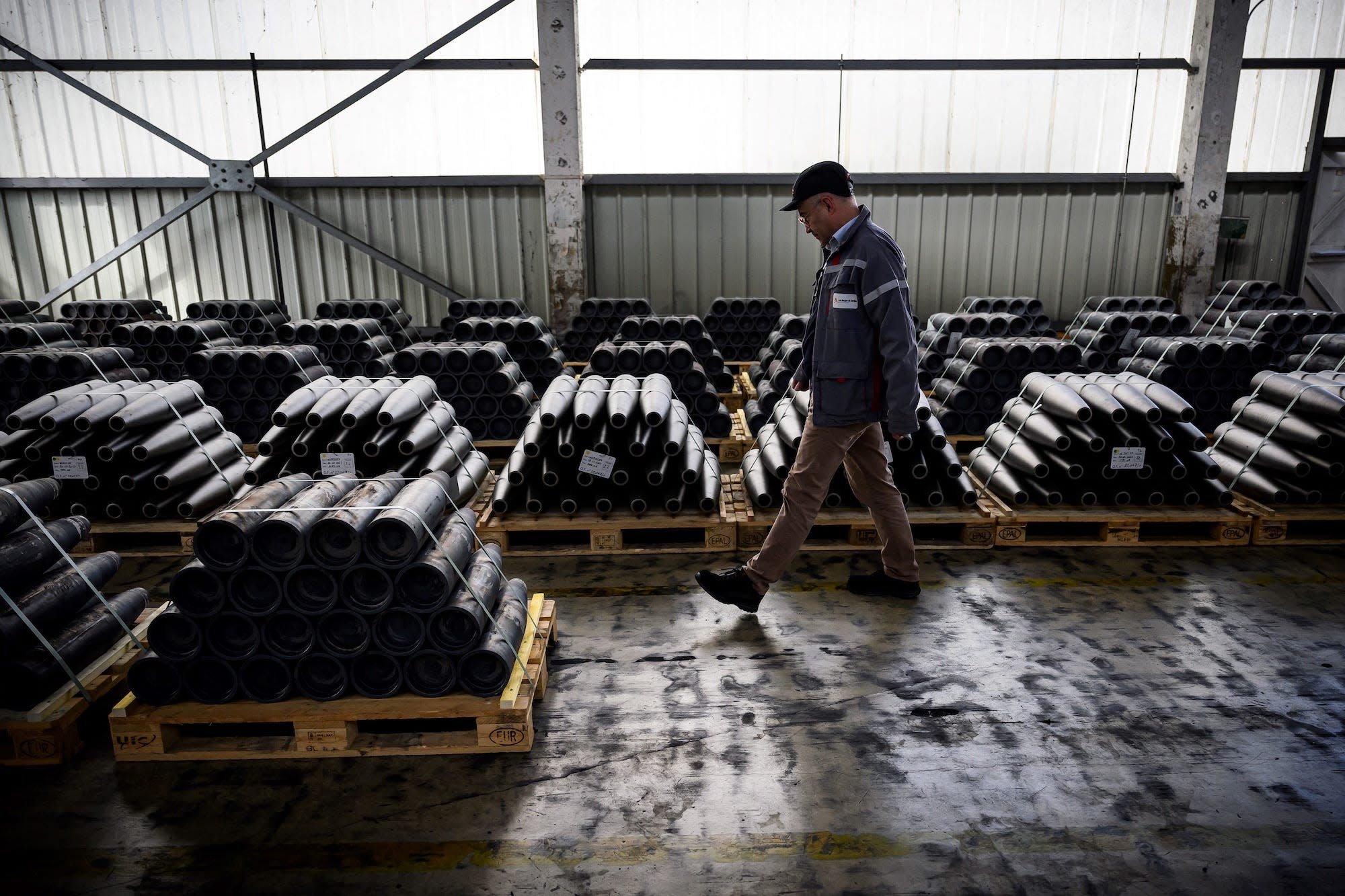
A few weeks ago, a new defense tech startup stepped out of the shadows with a bold claim: it had built a radically advanced 155mm artillery shell called Sceptre.
The ammo quickly grabbed attention for its promised combination of unprecedented range and precision.
But its creator, tech entrepreneur Chad Steelberg, believes the real innovation isn't necessarily what Sceptre does — it's how it's made and sold.
In late 2024, sickened by the Russian onslaught in Ukraine, Steelberg made a decision. He stepped down as CEO of the AI firm he had cofounded, Veritone, and handed the keys to his No.2.
"I gave them four months' notice" before founding Tiberius Aerospace, he told BI.
He knew nothing about aerospace back then, he said. But he knew people who did, bringing in a Navy SEAL commander, a former Apple hardware lead, and a top engineer from Raytheon.
"You get the best people in the world," Steelberg said. "You put 'em in a room, lock the box, and say: let's solve this problem."
That led to Sceptre, a rocket-propelled 155mm artillery shell that Steelberg says can hit targets up to 95 miles away— nearly triple the range of standard rounds — with precision, even in GPS-denied environments.
The munition itself has undergone test firing on a M777 in the US.

Tiberius won't actually be manufacturing Sceptre, offering an unusual "defense-as-a-service" model.
The company plans to license the design to governments, which will pay $5 million upfront to gain manufacturing rights, and then $2.5 million a year to stay on board and get continual updates.
They can then produce the munition in-country, using their own supply chains and industrial base.
What makes this possible is Tiberius opening up its specifications for individual components — like batteries, guidance units, and fuel systems — to outside suppliers.
Steelberg said suppliers will be encouraged to propose improvements, as long as the component fits within Sceptre's volumetric space.
"We will certify it, test it, fire it on the range, qualify it as a version if it passes safety and efficacy," he said.
This creates competition and choice for the governments buying it, he argued.
It's a model inspired by the early days of Intel, leaning on an open architecture, Steelberg said. While major companies like Boeing regularly bring in subcontractors to provide parts, Tiberius' platform is built around encouraging an ongoing ecosystem around this logic — almost like an app store for defence tech, with Sceptre at its core.
He suggested this would give governments the freedom to choose small, nimble manufacturers, support their own defense ecosystems, and reduce reliance on a handful of major contractors.
Governments place an order — keeping the intellectual property — for the version of Sceptre they end up making.
The bulk of Sceptre's main parts can be manufactured on simple, widely available CNC machines. This, Steelberg argues, cuts out the need for much of the heavy-duty facilities typically involved in munitions production and opens it up to much smaller players.
"So now they're actually allocating dollars to support not just the end weapon they're looking for, but actually the industries and the providers that manufactured it," he said.
The result, in his view, is a system that's more agile, more resilient, and better suited to modern warfare, where needs change faster than traditional procurement can keep up with.
As NATO countries scramble to rebuild their arsenals, the limits of the traditional procurement system are becoming harder to ignore.
"In terms of ammunition, Russia produces in three months what the whole of NATO produces in a year," NATO secretary-general, Mark Rutte, warned recently.

Autocratic regimes like Russia's can command industry at will. Democracies can't — and procurement systems built for peacetime tend to move at a glacial pace.
In broad-brush terms: a government commissions a giant contractor, a timeline and price are agreed, and five, ten, twenty years later, a product rolls off the line.
That model shuts out smaller players almost entirely.
"The big, big problem honestly is that there's been a co-evolution of ministries of defense and big prime manufacturers," Steelberg said, describing it as "an intellectual and contractual moat that prevents anyone else from getting in."
It's known as the "valley of death," where few new players can easily navigate Pentagon bureaucracy, or can bank on being around long enough to secure a contract.
DOD is experimenting with newer and nimbler models — such as open platforms and schemes to partner with smaller companies — but nothing quite to the scale that Tiberius envisions.
Paul Hough, a UK-based expert in defense procurement, shares Steelberg's calls for a shake-up of the system.
"Before we start pushing tsunamis of money through the old procurement model and the old industrial base structure, we should stop, take a breath," he told BI.
The yawning gap between promising prototypes from small companies and actual military adoption is further complicated by the fact that innovation increasingly comes from the private sector.
In the 1960s, governments funded around 60% of global R&D, according to Casey Purley, director of the Pentagon's Army Applications Laboratory. Today, she says it's about 20%, with commercial firms — often tech companies — picking up the slack.
"From AI to robotics, we need to work with companies we historically haven't," she told a recent conference in London.
Cynthia Cook, director of the Defense-Industrial Initiatives Group at the Center for Strategic and International Studies, said that Steelberg's model "does have the potential for production where some parts are made by primarily commercial suppliers.
"This could be a way of engaging the full industrial base beyond the more narrow slice of companies that are understood to be defense contractors," she told BI.
Capt. Bradley Martin, a RAND researcher who specializes in supply chain security, added that "much of the barrier-to-entry problem is solved because a company is only providing a small part of a larger system."
But other issues deserve scrutiny, they said.
Although Tiberius plans to take charge of certifying components, quality assurance could prove cumbersome, Martin said.
Another major issue will be tracking the provenance of materials used by the companies supplying components, he added.
"If a company's normal supply chain is heavily China-based, we would be creating a vulnerability," he told BI.
The US's standard-issue 155mm shells are manufactured by government-owned facilities, so production can lay dormant but be surged relatively easily. That's not really the case for non-standard shells.
If companies in the US are not dedicated to producing parts for Sceptre and move out of the business due to a lack of contracts, they'll "need to be attracted back — and they may have other business," Cook said.

Hough said that Sceptre may be cheaper and faster to produce in small batches, but he argued that it misses the broader context.
Artillery is still primarily an area-effect weapon, he said. The heavy weapons are indirect fire capabilities used for wide destruction and suppression, so while there is a place for the exquisite, precision-guided munitions, unless doctrine changes, precision rounds "are unlikely to supplant area (dumb) rounds," he said.
Hough said that, after Ukraine, militaries are prioritizing large stockpiles over just-in-time flexibility — a trend that doesn't appear to align with Tiberius' more agile model.
He added that some stages of shell production, including when explosives are inserted into the casing, are also "not a trivial exercise" and favor longer, centralized production runs.
For Hough, Tiberius' licensing model may be best used by the military in the same field from which Steelberg took his inspiration — software.
"I hope that the Tiberius model works," he said. "But at this point it appears to be a novel potential addition rather than a fundamental change to the established supply chain."
Whatever happens, though, he added, "we do need people that challenge this."
For Steelberg, his mission is one inspired by Winston Churchill's famous "blood, toil, tears and sweat" speech. But for him, enough blood and tears have been spilled already.
"I absolutely am willing to give you my toil and my sweat," he said. But if the West doesn't resolve its procurement issues, "we will be spilling our blood and our tears."
Read the original article on Business Insider
Access official company background, press-ready boilerplate, and high-res assets.